|
|||
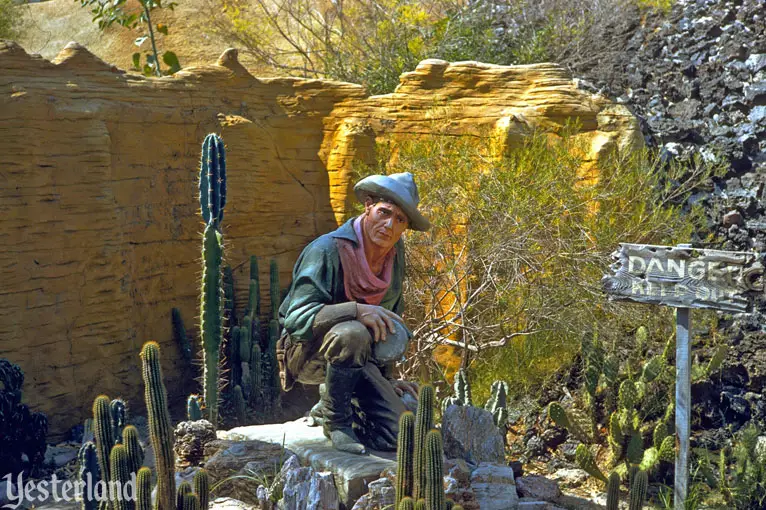
Photo by Charles R. Lympany, courtesy of Chris Taylor Gold prospector near the Knott’s volcano |
|||
|
|
|||
|
Gold… real, genuine, honest-to-gosh gold. Here at Yester Knott’s Berry Farm, there’s a gold mine in the gully next to the only active volcano in Southern California. You can pan for real gold and take home the results of your efforts. What are you waiting for? Head into the gulch. |
|||
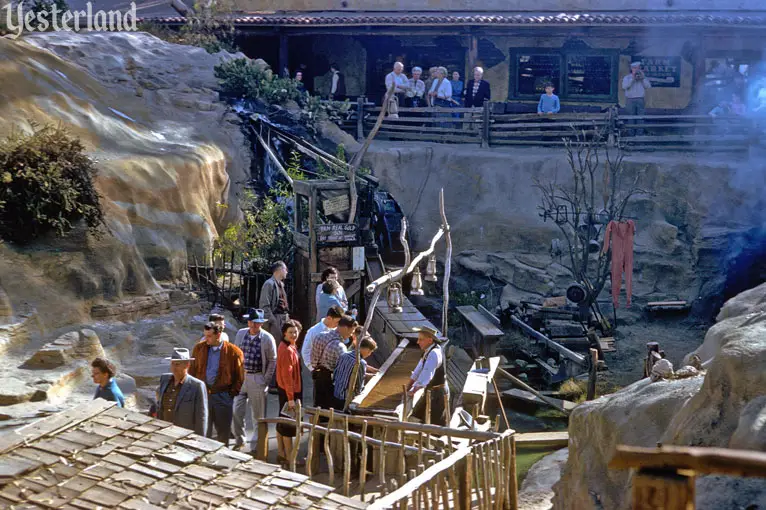
Photo by Charles R. Lympany, courtesy of Chris Taylor Down in the Gold Mine |
|||
|
There are two ways to descend to the mine floor. One is to walk down the steps. The other way — the fun way if you’re a kid (or a kid at heart) — is through a mine tunnel. Inside, there are peeks at mining scenes. |
|||

Photo, 1964, courtesy of the Orange County Archives, from the Knott’s Berry Farm Collection Top of the mine tunnel |
|||

Photo by Charles R. Lympany, courtesy of Chris Taylor Bottom of the mine tunnel |
|||
|
When you get to the bottom, there are two ways to enjoy the attraction. You can watch other visitors pan for gold. That’s free. But if you want to experience what it’s like to pan for gold yourself — and maybe to strike it rich — you’ll need to get in line and reach for your wallet. |
|||
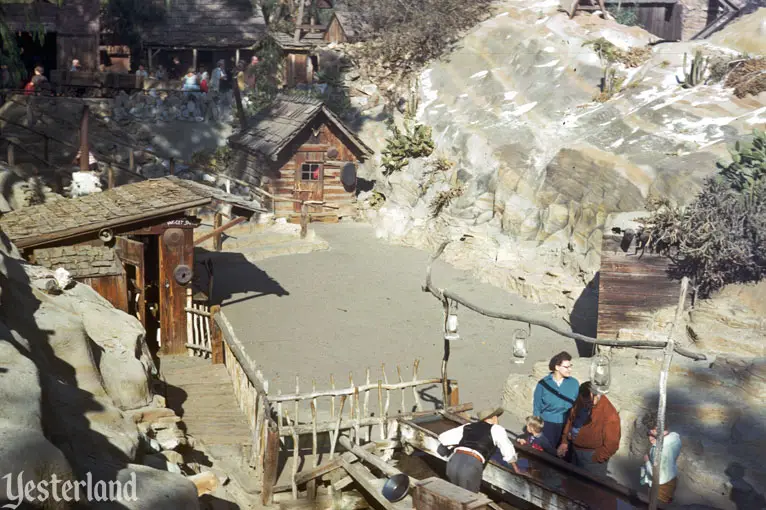
Photo by Charles R. Lympany, courtesy of Chris Taylor Ravine floor |
|||
|
Pay your fee. Now it’s your turn. The prospector scoops up a pan of sand with 22-karat gold specks from the bottom of the water-filled trough. He gives you a quick lesson on how to lose the sand and keep the gold. Now you’re on your own. Swirl your pan in the water. The sand is lighter than the gold, so the sand goes over the pan’s edge, while the gold stays behind. Eventually, only the gold flakes remain. The prospector puts your gold in a small vial. It’s yours to keep! |
|||
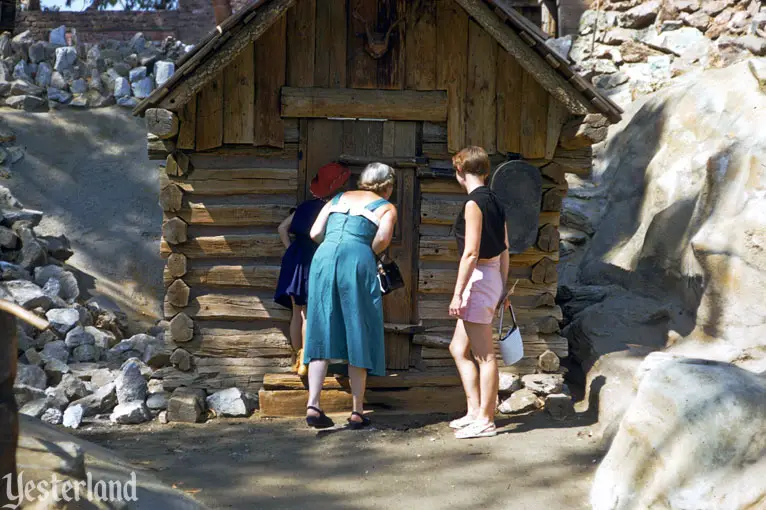
Photo by Charles R. Lympany, courtesy of Chris Taylor Peek-in on the floor of the Gold Mine ravine |
|||
|
|
|||
|
The original Pan For Gold attraction at Knott’s opened in 1947 in a sunken ravine on the edge of Ghost Town near the lava-rock volcano. (The volcano was a creative way to hide an unattractive standpipe.) |
|||
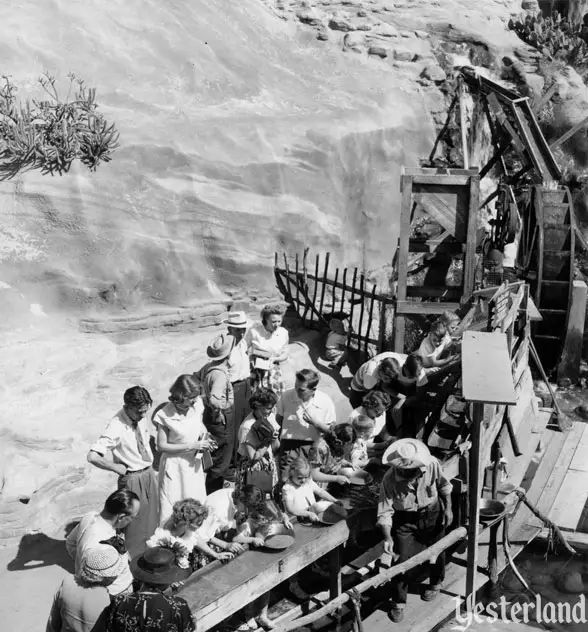
Photo, circa 1949, courtesy of the Orange County Archives, from the Knott’s Berry Farm Collection A few years after Pan For Gold opened |
|||
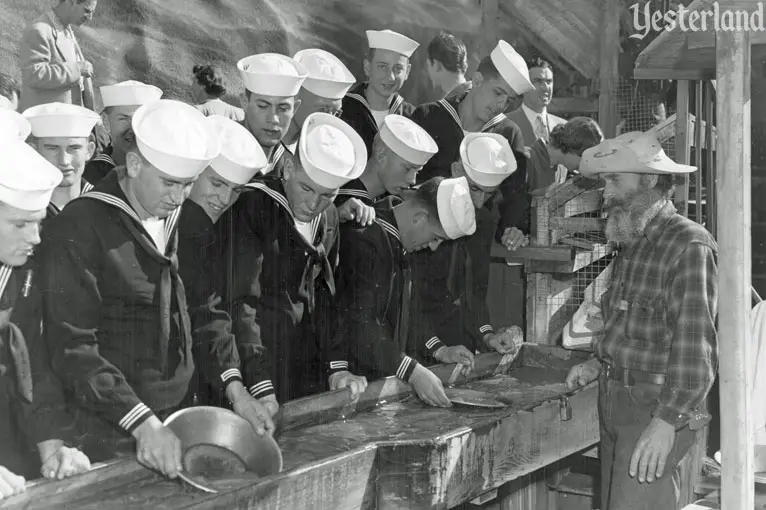
Photo, 1950, courtesy of the Orange County Archives, from the Knott’s Berry Farm Collection Gold for sailors |
|||
|
Where there’s gold, there can be gold thieves. In 1968, Gilbert Glenn Cornell, a Knott’s employee whose job included replenishing the gold, was charged with stealing 318 ounces of gold over a two-year period. The Los Angeles Times described how he did it (“Thefts Charged: Amusement Park Miner Arrested as Claimjumper,” by Steve Emmons, May 2, 1968): Police said Cornell was checking out three cans of soil salted with gold flakes from the park’s administration office but only using two of them at the mine. He took the third can home, averaging one a day, they said. Walter Knott, owner of the amusement center, said there are 2 ounces of gold mixed with sand in each can. The mixture is poured into a trough where, for 75 cents, visitors can pan for real gold and keep what they find. The thief was sentenced to 90 days in County Jail and three years probation, and ordered to pay $10 thousand restitution to Knott’s. It could have been worse. In the real Old West, he might have faced a hangman’s noose for stealing gold. The news reports of the crime and the trial proved that Pan For Gold uses real gold — and that Knott’s Berry Farm has to buy the yellow metal on a regular basis. For the first 20 years of the attraction, that wasn’t a problem — with the market price of gold steadily remaining near $35 an ounce. Then the price started to climb. |
|||
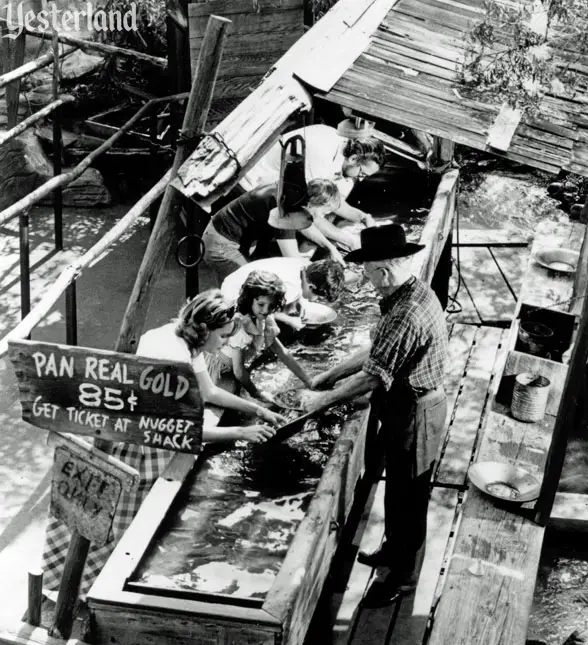
Photo courtesy of the Orange County Archives, from the Knott’s Berry Farm Collection “Pan Real Gold 85¢” |
|||
|
During the late 1970s, the market price of gold increased dramatically toward $600 per ounce. A Los Angeles Times article (“Gold Fever Boosts Price of Panning,” by Jack Boettner, January 8, 1980) addressed the problem: There’s still gold in Knott’s Berry Farm’s Ghost Town and amateur prospectors are panning for it in increasing numbers as the price of the precious metal soars. At the same time, the charge for panning gold dust or flakes in the farm’s trough has climbed from $85 cents to $1 a try and may have to go to $2 to keep up with the pace of the market, according to Steve Knott, grandson of farm founder Walter Knott. The article went on to discuss the economics: The average pan has been netting $1.05 worth of gold, Knott says. But that has not created a problem Knott explained, because the farm is still using a supply of gold purchased for $550 an ounce or less. All panners get some gold. Knott buys gold regularly from individual miners as well as the main suppliers in Northern California and the Yukon. “The miners, some of them armed, come into my office with their bags of gold,” Knott said. “We buy over 600 ounces a year. In addition to the gold dust and flakes, we buy nuggets that are sold at the mining areas.” The price of gold — and of Pan For Gold — continued to climb. |
|||
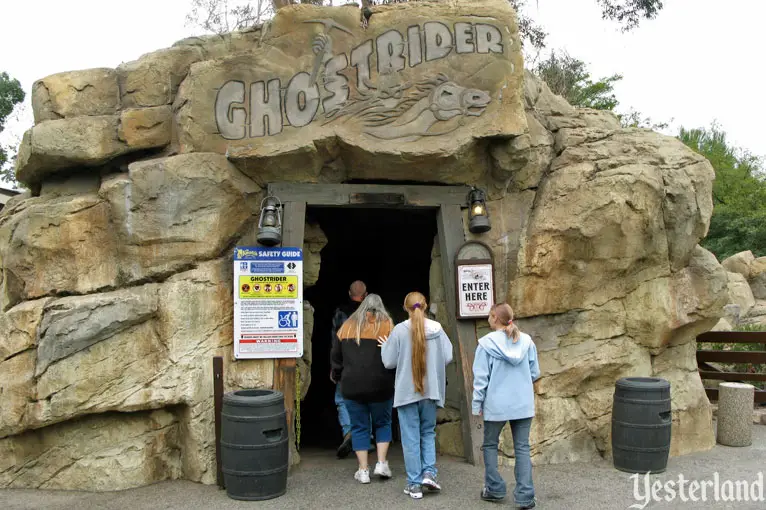
Photo by Werner Weiss, 2007 GhostRider queue entrance |
|||
|
In 1998, Knott’s opened GhostRider, a 4,533-foot-long, 118-foot-high wooden roller coaster. The massive ride needed a massive queue. The queue needed to begin in a high-visibility location, even though the track was behind Knott’s California Marketplace. The Gold Mine tunnel became the beginning of the GhostRider queue. New rockwork with the GhostRider logo covered the original entrance. |
|||
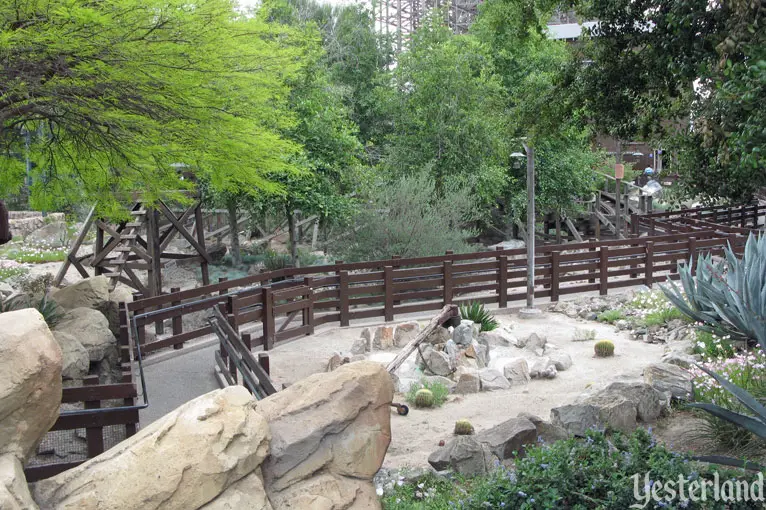
Photo by Werner Weiss, 2010 GhostRider queue using former Gold Mine |
|||
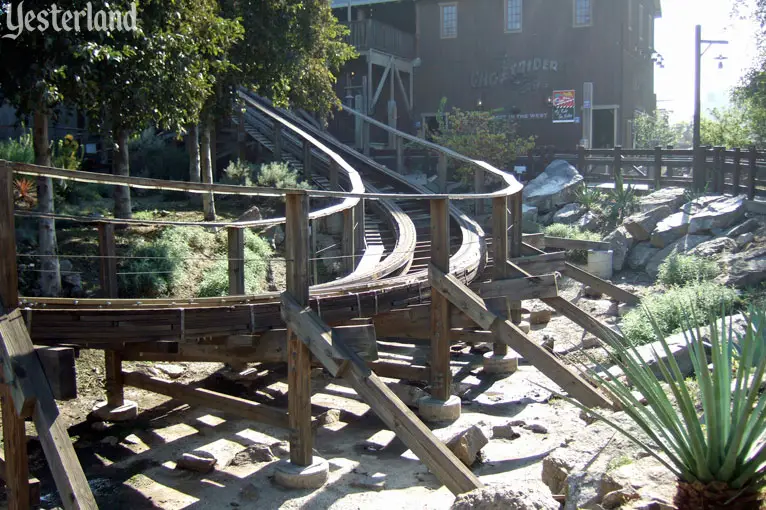
Photo by Allen Huffman, 2009 GhostRider track |
|||
|
But that wasn’t the end of Pan For Gold. It moved to a new location near the park’s Boot Hill Cemetery. |
|||
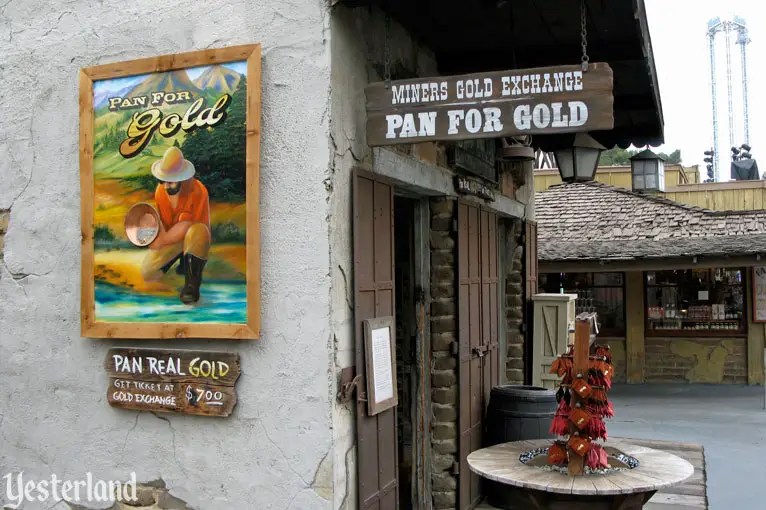
Photo by Werner Weiss, 2007 Newer Pan For Gold |
|||
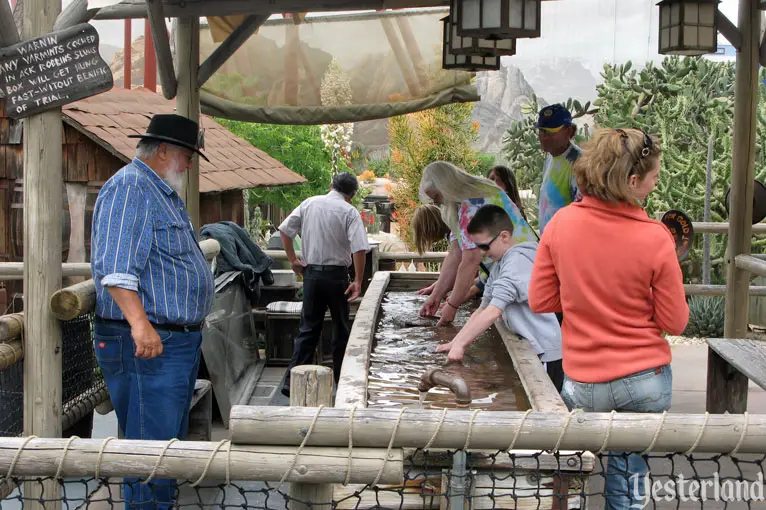
Photo by Werner Weiss, 2010 No longer in a ravine, but still atmospheric |
|||
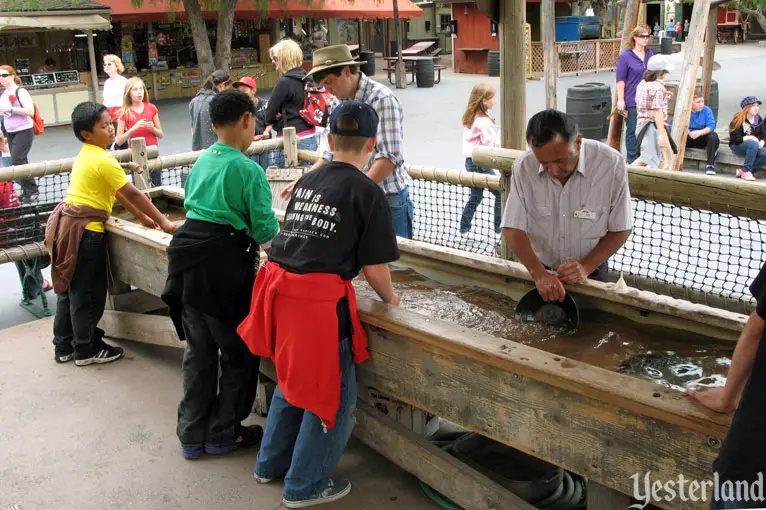
Photo by Werner Weiss, 2010 On the road between the Old School House and Calico Square |
|||
|
On April 7, 2016, Pan for Gold moved back to its original location. GhostRider hasn’t gone away. In fact, work began in September 2015 to restore and preserve the classic ride — still the longest, fastest, and tallest wooden roller coaster on the West Coast. The project includes re-profiling and a complete wooden re-tracking of the entire 4,533-foot-long track. According to Knott’s in 2015, “When GhostRider re-opens, the queue will snake past Panning for Gold, which returns to its original Ghost Town home next summer. The return to its former location will allow for a more spacious panning experience, which means a more comfortable experience and better photo ops to capture the moment when a loved one strikes it rich!” |
|||
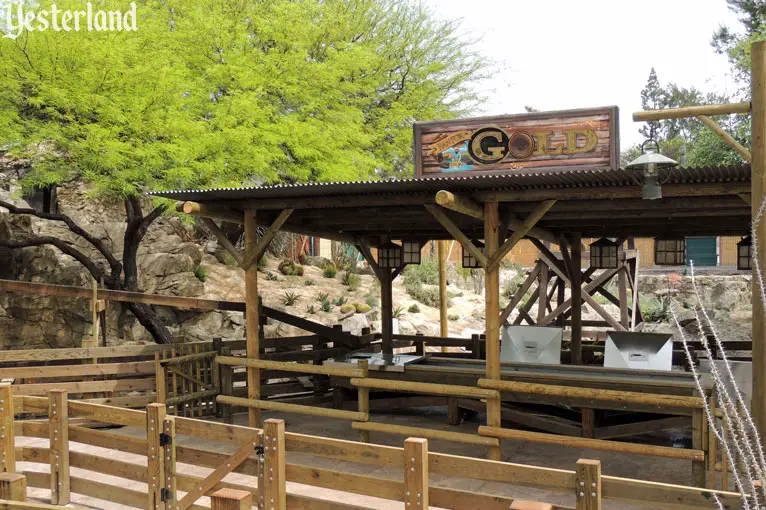
Photo by Werner Weiss, 2016 Pan for Gold, almost ready to reopen at its original location, April 2016 |
|||
|
The Gold Mine tunnel entrance remained part of the GhostRider queue. The ravine is shallow, but Pan for Gold returned to where it belongs. |
|||
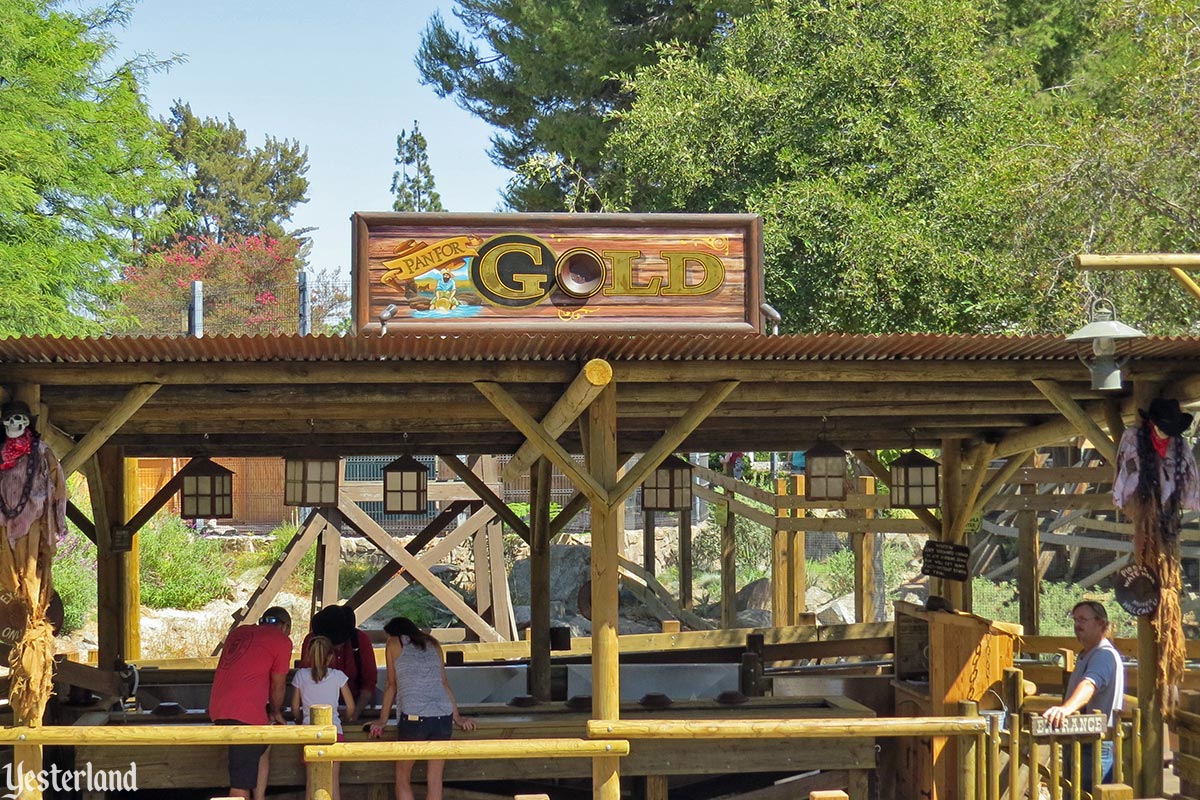
Photo by Chris Bales, 2016 Pan for Gold, back in business where it belongs |
|||
|
In 1947, an ounce of gold was $34.71. In March 2025, an ounce of gold was around $2,916 (with daily fluctuations). That an 8,301% increase. In 1947 Pan for Gold at Knott’s cost 25 cents. In March 2025, Pan for Gold at Knott’s cost $10. That a mere 3,900% increase. Based on the price of gold, Pan for Gold is a better value in 2025 than in 1947. |
|||
|
|
Click here to post comments at MiceChat about this article.
© 2025 Werner Weiss — Disclaimers, Copyright, and Trademarks Updated March 9, 2025 |
||